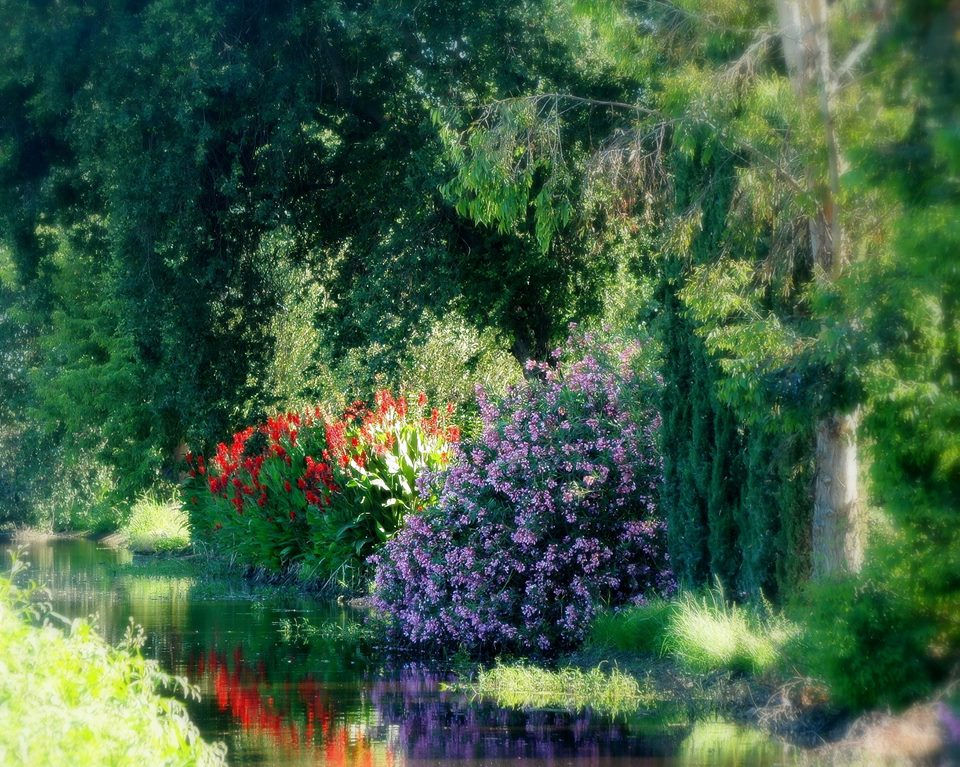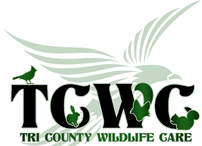Go Native!
Would you like your garden to be beautiful, use less water, save money, have fewer pests, and attract wildlife? Native plants can accomplish all of this and more.
Chemical pesticides are dangerous for you and the environment. Including native plants in your landscape can attract birds that will help eliminate many of the pests that plague your garden. Homeowners in the US spend millions dollars a year on chemicals to control pests. Native plants are a less expensive and naturally beautiful way to attract wildlife and eliminate pests.
Too many spiders? Plant low-lying plants such as American beautyberry or don’t clean up your garden quite so much. Start leaving nesting material, small bushes that provide cover and safety, and brush piles that encourage worms, and you will attract flycatchers and phoebes that love spiders and other insects.
Flower gardens attract hummingbirds who not only love flower nectar, they also eat small flying insects and tiny spiders. Sambucus (or elderberry) and ceanothus are favorites for nesting hummingbirds. Feed yourself and the hummers with currants and gooseberries. Or plant snapdragons, manzanitas, monkey flower and penstemon to keep them close to your garden. Wildflowers like lupine will also attract hummingbirds.
Yellow jackets and wasps send shivers down the spine of many. Attract tanagers and scrub jays to your garden and they will help to control these pests. Summer tanagers love wasps and yellow jackets; attract them with dogwood trees. Scrub jays love serviceberries as do other insect eaters like robins and mockingbirds.
How about a different kind of bird feeder? No, not the cute little houses and socks, but native plants. Bird seed can be expensive and messy. Let’s try something different and pretty. Asters are a perennial that will bring color and birds to your garden. Goldfinches, chickadees, nuthatches, sparrows and towhees will make your garden their home. Sparrows and towhees eat insects as well as seeds.
Yarrow is a favorite of goldfinches; California quail love California lilac; Summer-Holly will attract American Robins, Phainopepla, and Black-headed grosbeaks. Pick your favorite bird and plant a garden to attract them.
Sunflowers, those sometimes tall and lanky or short but bright yellow flowers, will attract many birds to your garden. Goldfinches, titmice and California scrub-jays love sunflower seeds.
There are many on-line sources for information about native plants. Here are a few.
The Lady Bird Johnson Wildflower Center promotes conversation of native plants. This website has a search tool using location, general appearance, lifespan to narrow down your search.
https://www.wildflower.org/plants/combo.php?fromsearch=true&distribution=&habit=&duration=&light_partshade=1&moist_dry=1&height_01=1
Audubon native plants database will provide search results by zip code. The “best results” list includes plants that are important for birds in the area, are easy to grow and find at nurseries.
https://www.audubon.org/native-plants
This site provides a long list of California native plants, how and when they attract birds to your garden. https://www.laspilitas.com/bird.htm
Native plants can make for a beautiful garden, save money and water, and attract birds to your garden.
Too many spiders? Plant low-lying plants such as American beautyberry or don’t clean up your garden quite so much. Start leaving nesting material, small bushes that provide cover and safety, and brush piles that encourage worms, and you will attract flycatchers and phoebes that love spiders and other insects.
Flower gardens attract hummingbirds who not only love flower nectar, they also eat small flying insects and tiny spiders. Sambucus (or elderberry) and ceanothus are favorites for nesting hummingbirds. Feed yourself and the hummers with currants and gooseberries. Or plant snapdragons, manzanitas, monkey flower and penstemon to keep them close to your garden. Wildflowers like lupine will also attract hummingbirds.
Yellow jackets and wasps send shivers down the spine of many. Attract tanagers and scrub jays to your garden and they will help to control these pests. Summer tanagers love wasps and yellow jackets; attract them with dogwood trees. Scrub jays love serviceberries as do other insect eaters like robins and mockingbirds.
How about a different kind of bird feeder? No, not the cute little houses and socks, but native plants. Bird seed can be expensive and messy. Let’s try something different and pretty. Asters are a perennial that will bring color and birds to your garden. Goldfinches, chickadees, nuthatches, sparrows and towhees will make your garden their home. Sparrows and towhees eat insects as well as seeds.
Yarrow is a favorite of goldfinches; California quail love California lilac; Summer-Holly will attract American Robins, Phainopepla, and Black-headed grosbeaks. Pick your favorite bird and plant a garden to attract them.
Sunflowers, those sometimes tall and lanky or short but bright yellow flowers, will attract many birds to your garden. Goldfinches, titmice and California scrub-jays love sunflower seeds.
There are many on-line sources for information about native plants. Here are a few.
The Lady Bird Johnson Wildflower Center promotes conversation of native plants. This website has a search tool using location, general appearance, lifespan to narrow down your search.
https://www.wildflower.org/plants/combo.php?fromsearch=true&distribution=&habit=&duration=&light_partshade=1&moist_dry=1&height_01=1
Audubon native plants database will provide search results by zip code. The “best results” list includes plants that are important for birds in the area, are easy to grow and find at nurseries.
https://www.audubon.org/native-plants
This site provides a long list of California native plants, how and when they attract birds to your garden. https://www.laspilitas.com/bird.htm
Native plants can make for a beautiful garden, save money and water, and attract birds to your garden.


